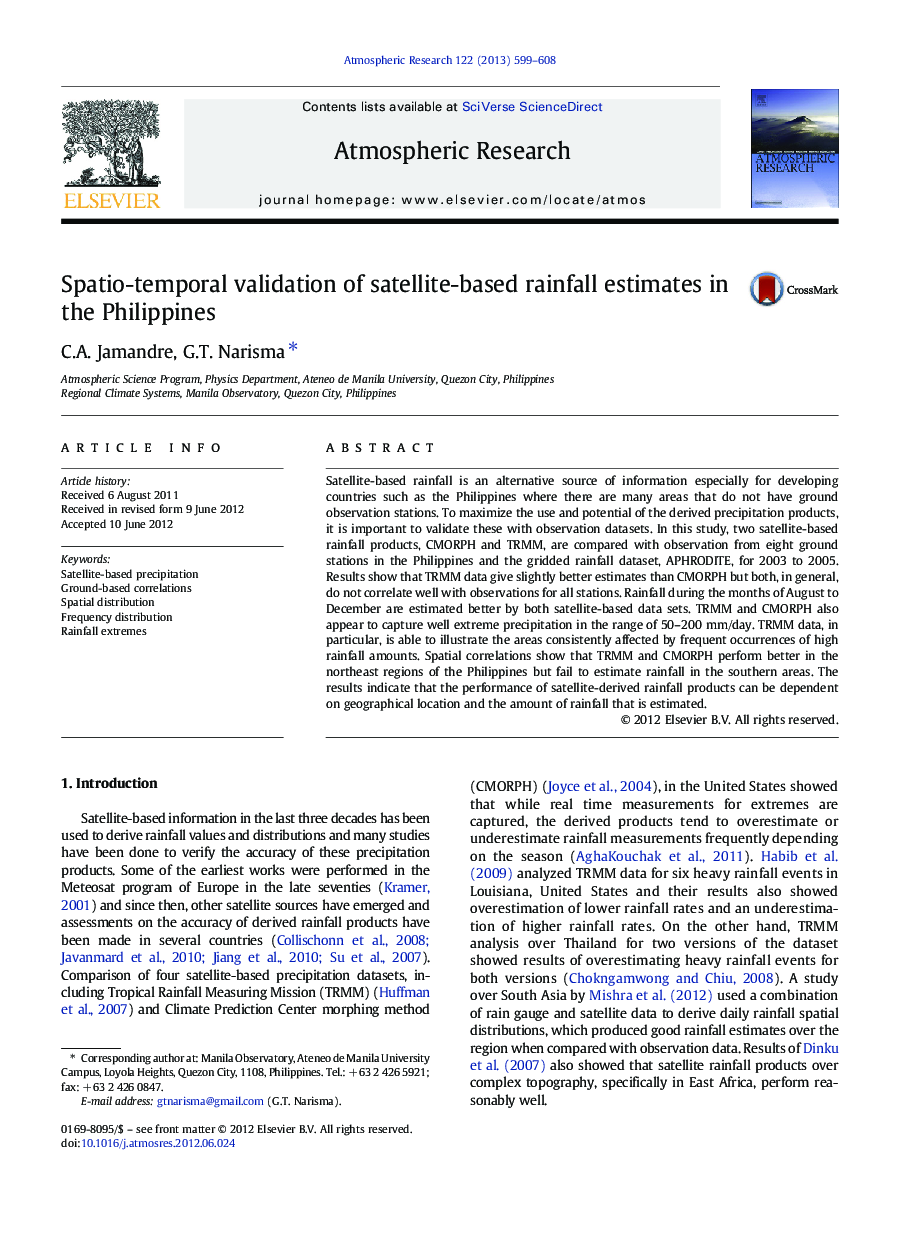| Article ID | Journal | Published Year | Pages | File Type |
|---|---|---|---|---|
| 6343952 | Atmospheric Research | 2013 | 10 Pages |
Satellite-based rainfall is an alternative source of information especially for developing countries such as the Philippines where there are many areas that do not have ground observation stations. To maximize the use and potential of the derived precipitation products, it is important to validate these with observation datasets. In this study, two satellite-based rainfall products, CMORPH and TRMM, are compared with observation from eight ground stations in the Philippines and the gridded rainfall dataset, APHRODITE, for 2003 to 2005. Results show that TRMM data give slightly better estimates than CMORPH but both, in general, do not correlate well with observations for all stations. Rainfall during the months of August to December are estimated better by both satellite-based data sets. TRMM and CMORPH also appear to capture well extreme precipitation in the range of 50-200Â mm/day. TRMM data, in particular, is able to illustrate the areas consistently affected by frequent occurrences of high rainfall amounts. Spatial correlations show that TRMM and CMORPH perform better in the northeast regions of the Philippines but fail to estimate rainfall in the southern areas. The results indicate that the performance of satellite-derived rainfall products can be dependent on geographical location and the amount of rainfall that is estimated.
⺠CMORPH and TRMM satellite-derived rainfall are validated against observations. ⺠CMORPH and TRMM in general do not correlate well with observation. ⺠Satellite rain estimates are better in northern regions of the Philippines. ⺠CMORPH and TRMM do not perform well in southern Philippines. ⺠CMORPH and TRMM capture frequency, magnitude of extreme rainfall events.
